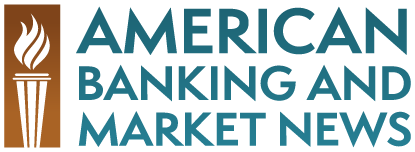Now that the FDIC has effectively admitted they’ve run out of money in the Deposit Insurance Fund, what does that mean to for the banking system in the U.S., and the consumers and businesses using them?
First we have to understand that the banking system, the FDIC and the Treasury Department are essentially insolvent. If Japan and China decide to stop buying Treasury Bonds, the U.S. economy would immediately collapse. Japan is already moving in that direction, and many expect China to do the same if the value of the U.S. dollar continues to fall. This isn’t an immediate concern, but mid-term it definitely is, and long-term, it’s almost a surety for China.
As far as the FDIC and the banking industry, everything being done now is being done with the fervid hope that the economy will miraculously turn around before judgement day appears. Almost nothing is being done to deal with the long term, everything is being done to save the present in regard to banking and the U.S. economy; a practice that inevitably destroys the future over the long term, which some day will be the present for all of us.
What is this all about? Why not tap the Treasury credit line? Other than the admission mentioned above, there is a battle between FDIC head Sheila Bair and the Treasury’s Timothy Geithner. Bair wants the FDIC to be delegated more authority to handle the financial crisis, while Geithner wants to invest even more authority into the Federal Reserve (that has really worked well).
As a result, Bair is doing everything she can not to have to cave and go to Geithner to capitalize the Deposit Insurance Fund (just insert Geithner and Bair into an Internet search to see their battle over the months.)
Without getting into the myriad data and numbers related to all this – many of which are dubious at best – the answer to the question of “now what” that I included in the title of the article, is we can only wait, like all the government entities. They’re playing their final cards, and if the economy doesn’t turn around any time soon, which it won’t, there will be a reckoning, and it’s unclear as to how deep that further reckoning will go than it already has, as government and banking accounting data are being fudged in order to keep things from looking as bad as there really are, so we can’t really count on the numbers being told us as to the real state of the industry.
Again, the hope is something will turn the economy around so they aren’t called on what is really happening, or have to let people know how deeply in trouble we really are.
Sheila Bair is going to extend the available capital in the Deposit Insurance Fund of the FDIC possibly out to the second or third quarter of 2010 with the money she’ll get from the banks via prepaid fees into the fund; at least that’s the hope she has, although it’s unclear how many banks will fail between now and then, as the numbers have skyrocketed above 40 percent to $100 billion concerning expected losses needing to be covered from 2009 through 2013. It originally was estimated at $70 billion. The $100 billion figure is sure to rise, and will probably occur much earlier than anticipated.
Add to that the time it’ll take to replenish the DIF to its mandated level, which has now been extended out to 8 years, and you see the extraordinary vulnerability and weakness the Fund is experiencing.
There is literally nothing else that can be done at this time. The credit line from the Treasury is available, but Bair is battling from having to tap that because of personal and professional reasons, and if it is tapped it of course would have to be paid back, extending the time period into who knows how long to bring the Deposit Insurance Fund back to any type of healthy level.
Bair is also fighting to keep the FDIC from being considered an irrelevant financial institution, as the current economic circumstances is in reality showing it to be. It can operate fine under small duress, but in these types of circumstances, it can’t handle the purpose for which it was created: protect the deposits of consumers.
So the bottom line is we’re all going to have to wait. While it’s highly unlikely American depositors will lose any of their insured money, the fallout from all of this is unknown at this time concerning the existing government agencies and their ongoing viability.
This doesn’t even take into account the Federal Reserve and the seemingly worthless paper it owns after trading liquid assets for worthless bank assets in order to shore up the system. And it also doesn’t take into account the commercial loans out there which are going to come back to haunt the banks which are so vulnerable in this regard too.
Almost every mistake by the Obama administration and the Federal Reserve has been made while attempting to keep some short term pain from happening because of the many government and banking mistakes that have led us to where we are now. Other than changing interest rates and continuing to print more money, we’re pretty much at the end of what can be done without completely destroying the American economy.
No amount of rhetoric or ongoing assertions by the U.S. government will be able to cover up the disaster they’ve created on the American people, and by extension – the world. All we can do now is sit back and continue to save up, pay down our debts, and hope no other stupid politician tries to save us, while with their unintended consequences, end up hurting us more.






